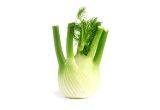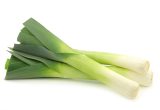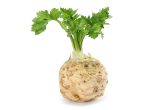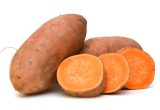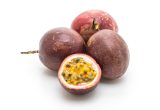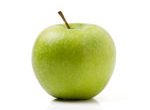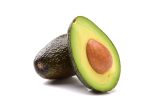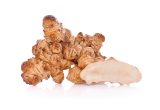Clementine / Mandarin

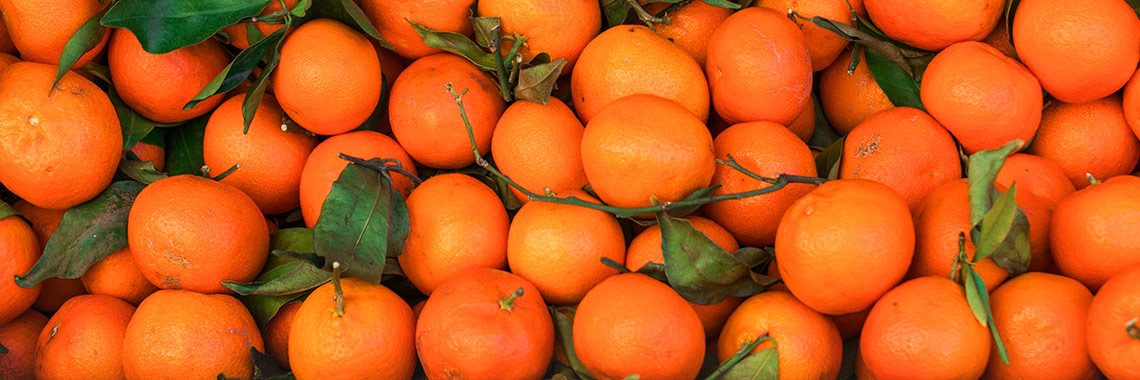
Description
- Clementine (Citrus clementina Ex Tan.) and Mandarin (Citrus reticulata Blanco) trees both belong to the Rutaceae family.
- The Citrus genus was domesticated in Southeast Asia. The cultivation of small fruits such as the clementine is very present in the Mediterranean Basin (Ollitrault, 2012).
- The clementine (Citrus clementina Ex Tan.) is the result of a hybridisation between the “Mediterranean” mandarin and the sweet orange (Ollitrault, 2012).
PHYSICAL AND ORGANOLEPTIC CHARACTERISTICS
- Mandarin is a fruit of about 6.5 to 7.5 cm, whose rind is green in colour at the time of harvest and develops its orange colour during the ripening phase (Ladaniya, 2011). It is composed of 9 to 12 juicy segments (Sawamura, 2004).
- During ripening, the colour of the mandarin changes from green to orange. This is because the chlorophyll content, responsible for the green colour, decreases as it transforms into chromoplasts. Similarly, the presence of anthocyanins, a red-blue or purple pigment, decreases during ripening, due to the mutation of the Ruby 1 MYB protein, responsible for their synthesis. Conversely, the content of carotenoids, an orange pigment, increases and gives the mandarin its colour (Iglesias, 2001; Alos, 2006; Allan, 2018).
- Citric acid is characteristic of fruits in the Citrus genus, such as clementine and mandarin, and gives them their acidic taste (Wang, 2018).
- Thirty volatile substances are thought to be responsible for the odour of mandarin skin, 17 of which have been identified as effective biomarkers to distinguish mandarins and clementines from other fruits of the Citrus genus. In particular, β-elemene, valencene, nootkatone and citropten are thought to be involved (Zhang, 2019).
COMPOSITION CHARACTERISTICS (excluding macronutrients, vitamins and minerals)
- High in vitamin C and containing significant levels of citric acid and bioactive compounds (alkaloids), mandarins have antioxidant, anticancer, antiviral, antimutagenic and anti-allergy properties (Andronie, 2016; Mahato, 2018).
- Clementines contain a significant content of ferulic acid, a phenol that exhibits antioxidant properties and may inhibit enzymes involved in high blood sugar and hypertension (Alu’datt, 2017).
RAW
The following values are approximate and depend on variety, season, ripeness, cultivation conditions, etc. The clementine/mandarin provides on average 47.30 calories (kcal) per 100 g, i.e. 200 kJ.
A clementine/mandarin weighs between 45 and 55 g, meaning it provides between 21.28 and 26.01 kcal.
COMPOSITION TABLES
For each nutrient, the tables provide information on the content, minimum and maximum values, as well as the percentage of the Dietary Reference Values (DRVs) for 100 g net of raw clementines/mandarins (except for the table on polyphenols, which relates exclusively to mandarins).
MACRONUTRIENTS
| Constituent (g) | Average content |
Min-Max per 100g |
DRV% |
|---|---|---|---|
| Water | 87 | 80,70 - 88,60 | - |
| Fibers | 1,70 | 1,10 - 3,20 | - |
| Carbohydrates | 9,17 | - | 3,53 |
| Sugars | - | 7,88 - 15,20 | - |
| Lipids | < 0,50 | 0,07 - NC | - |
| Saturated fat | < 0,01 | NC - 0,039 | - |
| Protein | 0,81 | 0,10 - 1,25 | 1,62 |
| Constituent (g) | Amount | Min-Max | DRV% |
|---|---|---|---|
| Water | Ciqual 2020 (valeur issue des analyses Ciqual-Aprifel 2017) | - | 200 |
| Fibers | Ciqual 2020 (valeur issue des analyses Ciqual-Aprifel 2017) | - | - |
| Carbohydrates | Ciqual 2020 | - | Règlement (UE) N°1169/2011 du parlement Européen et du conseil du 25 octobre 2011 |
| Sugars | Ciqual 2020 (valeur issue des analyses Ciqual-Aprifel 2017) | - | Règlement (UE) N°1169/2011 du parlement Européen et du conseil du 25 octobre 2011 |
| Lipids | Ciqual 2020 (valeur issue des analyses Ciqual-Aprifel 2017) | - | Règlement (UE) N°1169/2011 du parlement Européen et du conseil du 25 octobre 2011 |
| Saturated fat | Ciqual 2020 (valeur issue des analyses Ciqual-Aprifel 2017) | - | Règlement (UE) N°1169/2011 du parlement Européen et du conseil du 25 octobre 2011 |
| Protein | Ciqual 2020 (valeur issue des analyses Ciqual-Aprifel 2017) | - | Règlement (UE) N°1169/2011 du parlement Européen et du conseil du 25 octobre 2011 |
Zoom on carbohydrates
- The energy of clementines/mandarins comes mainly from their carbohydrates, at 9.17 g per 100 g.
- This amount of carbohydrates is below the average quantity found in fresh fruit (about 11.31 g per 100 g).
- They are mainly sucrose (5.70 g per 100 g), fructose (1.50 g per 100 g) and glucose (1.40 g per 100 g).
Zoom on fibres
- Clementines/mandarins contain an average of 1.70 g of fibre per 100 g, which is lower than the average fibre content of fresh fruit (2.77 g per 100 g).
Zoom on proteins
- Clementines/mandarins have a protein content (0.81 g per 100 g) lower than the average amount in fresh fruit (about 0.93 g per 100 g).
Zoom on lipids
- Clementines/mandarins are fat-free* as they contain less than 0.5 g of fat per 100 g.
*Regulation (EC) No 1924/2006 of the European Parliament and of the Council of 20 December 2006 on nutrition and health claims made on foods.
MINERALS AND TRACE ELEMENTS
| Constituent | Average content |
Min-Max per 100g |
DRV% |
|---|---|---|---|
| Calcium (mg) | 23 | 17,90 - 48 | 2,88 |
| Chloride (mg) | < 20 | - | - |
| Copper (mg) | 0,04 | 0,032 - 0,062 | 4 |
| Iron (mg) | 0,09 | NC - 0,24 | 0,64 |
| Iodine (µg) | < 20 | 0,30 - NC | - |
| Magnesium (mg) | 9,30 | 8,30 - 13 | 2,48 |
| Manganese (mg) | 0,02 | 0,018 - 0,06 | 1 |
| Phosphorus (mg) | 18 | 15,10 - 25,70 | 2,57 |
| Potassium (mg) | 140 | 103 - 239 | 7 |
| Selenium (µg) | < 20 | 0,40 - NC | - |
| Sodium (mg) | < 5 | 0 - 6 | - |
| Zinc (mg) | 0,10 | 0,04 - 0,11 | 1 |
| Constituent | Amount | Min-Max | DRV% |
|---|---|---|---|
| Calcium (mg) | Ciqual 2020 (valeur issue des analyses Ciqual-Aprifel 2017) | - | Règlement (UE) N°1169/2011 du parlement Européen et du conseil du 25 octobre 2011 |
| Chloride (mg) | Ciqual 2020 (valeur issue des analyses Ciqual-Aprifel 2017) | - | Règlement (UE) N°1169/2011 du parlement Européen et du conseil du 25 octobre 2011 |
| Copper (mg) | Ciqual 2020 (valeur issue des analyses Ciqual-Aprifel 2017) | - | Règlement (UE) N°1169/2011 du parlement Européen et du conseil du 25 octobre 2011 |
| Iron (mg) | Ciqual 2020 (valeur issue des analyses Ciqual-Aprifel 2017) | - | Règlement (UE) N°1169/2011 du parlement Européen et du conseil du 25 octobre 2011 |
| Iodine (µg) | Ciqual 2020 (valeur issue des analyses Ciqual-Aprifel 2017) | - | Règlement (UE) N°1169/2011 du parlement Européen et du conseil du 25 octobre 2011 |
| Magnesium (mg) | Ciqual 2020 (valeur issue des analyses Ciqual-Aprifel 2017) | - | Règlement (UE) N°1169/2011 du parlement Européen et du conseil du 25 octobre 2011 |
| Manganese (mg) | Ciqual 2020 (valeur issue des analyses Ciqual-Aprifel 2017) | - | Règlement (UE) N°1169/2011 du parlement Européen et du conseil du 25 octobre 2011 |
| Phosphorus (mg) | Ciqual 2020 (valeur issue des analyses Ciqual-Aprifel 2017) | - | Règlement (UE) N°1169/2011 du parlement Européen et du conseil du 25 octobre 2011 |
| Potassium (mg) | Ciqual 2020 (valeur issue des analyses Ciqual-Aprifel 2017) | - | Règlement (UE) N°1169/2011 du parlement Européen et du conseil du 25 octobre 2011 |
| Selenium (µg) | Ciqual 2020 (valeur issue des analyses Ciqual-Aprifel 2017) | - | Règlement (UE) N°1169/2011 du parlement Européen et du conseil du 25 octobre 2011 |
| Sodium (mg) | Ciqual 2020 (valeur issue des analyses Ciqual-Aprifel 2017) | - | - |
| Zinc (mg) | Ciqual 2020 (valeur issue des analyses Ciqual-Aprifel 2017) | - | Règlement (UE) N°1169/2011 du parlement Européen et du conseil du 25 octobre 2011 |
Zoom on minerals and trace elements
- Potassium is the trace element best represented in clementines/mandarins with a content equivalent to 7% of DRVs, i.e. 140 mg per 100 g.
- The other minerals and trace elements are present in quantities representing less than 5% of DRVs.
VITAMINS
| Constituent | Average content |
Min-Max per 100g |
DRV% |
|---|---|---|---|
| Provitamin A Beta-carotene (µg) | 147 | 30 - 445 | - |
| Vitamin A equivalent (µg) | 24,50 | 6 - 74,17 | 3,06 |
| Vitamin B1 (mg) | 0,064 | 0,04 - 0,11 | 5,82 |
| Vitamin B2 (mg) | < 0,01 | 0,007 - 0,05 | - |
| Vitamin B3 (mg) | 0,23 | 0,20 - 1,24 | 1,44 |
| Vitamin B5 (mg) | 0,20 | 0,10 - 0,29 | 3,33 |
| Vitamin B6 (mg) | 0,079 | 0,054 - 0,093 | 5,64 |
| Vitamin B9 (µg) | 27,60 | 8,60 - 32 | 13,80 |
| Vitamin C (mg) | 49,20 | 22,10 - 56,40 | 61,50 |
| Vitamin E (mg) | 0,21 | 0,10 - 0,55 | 1,75 |
| Vitamin K1 (µg) | < 0,80 | 0 - NC | - |
| Constituent | Amount | Min-Max | DRV% |
|---|---|---|---|
| Provitamin A Beta-carotene (µg) | Ciqual 2020 (valeur issue des analyses Ciqual-Aprifel 2017) | - | - |
| Vitamin A equivalent (µg) | Calcul à partir de la valeur Provitamine A Béta-carotène* | - | Règlement (UE) N°1169/2011 du parlement Européen et du conseil du 25 octobre 2011 |
| Vitamin B1 (mg) | Ciqual 2020 (valeur issue des analyses Ciqual-Aprifel 2017) | - | Règlement (UE) N°1169/2011 du parlement Européen et du conseil du 25 octobre 2011 |
| Vitamin B2 (mg) | Ciqual 2020 (valeur issue des analyses Ciqual-Aprifel 2017) | - | Règlement (UE) N°1169/2011 du parlement Européen et du conseil du 25 octobre 2011 |
| Vitamin B3 (mg) | Ciqual 2020 (valeur issue des analyses Ciqual-Aprifel 2017) | - | Règlement (UE) N°1169/2011 du parlement Européen et du conseil du 25 octobre 2011 |
| Vitamin B5 (mg) | Ciqual 2020 (valeur issue des analyses Ciqual-Aprifel 2017) | - | Règlement (UE) N°1169/2011 du parlement Européen et du conseil du 25 octobre 2011 |
| Vitamin B6 (mg) | Ciqual 2020 (valeur issue des analyses Ciqual-Aprifel 2017) | - | Règlement (UE) N°1169/2011 du parlement Européen et du conseil du 25 octobre 2011 |
| Vitamin B9 (µg) | Ciqual 2020 (valeur issue des analyses Ciqual-Aprifel 2017) | - | Règlement (UE) N°1169/2011 du parlement Européen et du conseil du 25 octobre 2011 |
| Vitamin C (mg) | Ciqual 2020 (valeur issue des analyses Ciqual-Aprifel 2017) | - | Règlement (UE) N°1169/2011 du parlement Européen et du conseil du 25 octobre 2011 |
| Vitamin E (mg) | Ciqual 2020 (valeur issue des analyses Ciqual-Aprifel 2017) | - | Règlement (UE) N°1169/2011 du parlement Européen et du conseil du 25 octobre 2011 |
| Vitamin K1 (µg) | Ciqual 2020 (valeur issue des analyses Ciqual-Aprifel 2017) | - | Règlement (UE) N°1169/2011 du parlement Européen et du conseil du 25 octobre 2011 |
Zoom on vitamins
- Clementines/mandarins are high in vitamin C as they provide the equivalent of 61.50% of DRVs, i.e. 49.20 mg per 100 g.
- They also contain a significant amount of vitamin B9, as they provide the equivalent of 13.80% of DRVs, i.e. 27.60 µg per 100 g.
- The other vitamins are present in quantities representing less than 6% of DRVs.
*Calculation made: Beta Carotene / 6 + retinol
POLYPHENOLS
Constituent
(mg)
Average content
Min-Max
per 100mg
Lignanes
(mg)
7,90
7,80 - 8,20
Total polyphenols
7,90
7,80 - 8,20
Constituent
(mg)
Amount
Min-Max
Lignanes
Phénol Explorer Version 3.6 Méthode utilisée : Chromatographie après hydrolyse
-
Total polyphenols
Phénol Explorer Version 3.6 Méthode utilisée : Chromatographie après hydrolyse
-
Zoom on polyphenols (mandarins)
- Polyphenols are substances with an antioxidant effect.
- The polyphenols in mandarins are in the form of lignans according to chromatographic analysis after hydrolysis.
Nutrition and health claims
According to the definitions of nutrition claims as set out in Regulation (EC) No 1924/2006 on nutrition and health claims, and in view of the composition of clementines/mandarins, the following claims may be used:
NUTRITION CLAIMS OF CLEMENTINES/MANDARINS
- Fat-free (100 g of clementines/mandarins contain less than 0.5 g of fat)
- High in vitamin C (100 g of clementines/mandarins provide the equivalent of more than 30% of DRVs)
HEALTH CLAIMS (for a consumption of 100 g of clementines/mandarins)
Vitamin C
- Vitamin C contributes to:
- normal function of the immune system during and after intense physical exercise,
- normal collagen formation for the normal function of blood vessels,
- normal collagen formation for the normal function of bones,
- normal collagen formation for the normal function of cartilage,
- normal collagen formation for the normal function of gums,
- normal collagen formation for the normal function of skin,
- normal collagen formation for the normal function of teeth,
- normal energy-yielding metabolism,
- normal functioning of the nervous system,
- normal psychological function,
- normal function of the immune system,
- protection of cells from oxidative stress,
- reduction of tiredness and fatigue,
- regeneration of the reduced form of vitamin E.
- Vitamin C increases iron absorption.
References
- Agence nationale de sécurité sanitaire de l’alimentation, de l’environnement et du travail. Table de composition nutritionnelle des aliments Ciqual 2020. Consultée le 11/08/2020 depuis le site internet Ciqual https://ciqual.anses.fr/
- Andronie L, Coroian A, Mireșan V, Pop I, Raducu C, Odagiu A. Vibrational Study for the Lemon and Tangerine Fruit Using FT-IR Spectroscopy. ProEnvironment/ProMediu. 2016;9(28):221–4.
- Allan AC. Orange is not just a colour. Nature Plants. 2018;4(11):865–6.
- Alós E, Cercós M, Rodrigo MJ, Zacarías L, Talón M. Regulation of color break in citrus fruits. Changes in pigment profiling and gene expression induced by gibberellins and nitrate, two ripening retardants. J Agric Food Chem. 2006;54(13):4888-95.
- Alu’datt MH, Rababah T, Alhamad MN, Al-Mahasneh MA, Ereifej K, Al-Karaki G, Al-Duais M, Andrade JE, Tranchant CC, Kubow S, Ghozlan KA. Profiles of free and bound phenolics extracted from Citrus fruits and their roles in biological systems: content, and antioxidant, anti-diabetic and anti-hypertensive properties. Food & Function. 2017;8(9):3187–97.
- Iglesias DJ, Tadeo FR, Legaz F, Primo-Millo E, Talon M. In vivo sucrose stimulation of colour change in citrus fruit epicarps: Interactions between nutritional and hormonal signals. Physiol Plant. 2001;112(2):244-50.
- Ladaniya MS. Physico-chemical, respiratory and fungicide residue changes in wax coated mandarin fruit stored at chilling temperature with intermittent warming. J Food Sci Technol. 2011 Apr;48(2):150-8.
- Mahato N, Sharma K, Sinha M, Cho MH. Citrus waste derived nutra-/pharmaceuticals for health benefits: Current trends and future perspectives. Journal of Functional Foods. 2018;40:307–16.
- Neveu V, Perez-Jiménez J, Vos F, Crespy V, du Chaffaut L, Mennen L, Knox C, Eisner R, Cruz J, Wishart D, Scalbert A. (2010) Phenol-Explorer: an online comprehensive database on polyphenol contents in foods. Database, doi: 10.1093/database/bap024. Full text (free access)
- Ollitrault P, Terol J, Chen C, Federici CT, Lotfy S, Hippolyte I, Ollitrault F, Bérard A, Chauveau A, Cuenca J, Costantino G, Kacar Y, Mu L, Garcia-Lor A, Froelicher Y, Aleza P, Boland A, Billot C, Navarro L, Luro F, Roose ML, Gmitter FG, Talon M, Brunel D. A reference genetic map of C. clementina hort. ex Tan.; citrus evolution inferences from comparative mapping. BMC Genomics. 2012;13:593.
- Règlement (CE) N° 1924/2006 du Parlement européen et du Conseil du 20 décembre 2006 concernant les allégations nutritionnelles et de santé portant sur les denrées alimentaires.
- Règlement (UE) N°432/2012 de la Commission du 16 mai 2012 établissant une liste des allégations de santé autorisées portant sur les denrées alimentaires, autres que celles faisant référence à la réduction du risque de maladie ainsi qu’au développement et à la santé infantiles.
- Règlement (UE) n°1169/2011 du Parlement européen et du Conseil du 25 octobre 2011 concernant l’information des consommateurs sur les denrées alimentaires, modifiant les règlements (CE) n°1924/2006 et (CE) n°1925/2006 du Parlement européen et de Conseil et abrogeant la directive 87/250/CEE de la Commission, la directive 90/496/CEE du Conseil, la directive 1999/10/CE de la Commission, la directive 200/13/CE du Parlement européen et du Conseil, les directives 2002/67/CE et 2008/5/CE de la Commission et le règlement (CE) n°608/2004 de la Commission.
- Sawamura M, Thi Minh Tu N, Onishi Y, Ogawa E, Choi HS. Characteristic odor components of Citrus reticulata Blanco (ponkan) cold-pressed oil. Biosci Biotechnol Biochem. 2004;68(8):1690-7.
- Wang L, He F, Huang Y, He J, Yang S, Zeng J, Deng C, Jiang X, Fang Y, Wen S, Xu R, Yu H, Yang X, Zhong G, Chen C, Yan X, Zhou C, Zhang H, Xie Z, Larkin RM, Deng X, Xu Q. Genome of Wild Mandarin and Domestication History of Mandarin. Molecular Plant. 2018;11(8):1024–37.
- Zhang H, Wen H, Chen J, Peng Z, Shi M, Chen M, Yuan Z, Liu Y, Zhang H, Xu J. Volatile Compounds in Fruit Peels as Novel Biomarkers for the Identification of Four Citrus Species. Molecules. 2019;24(24):4550.




